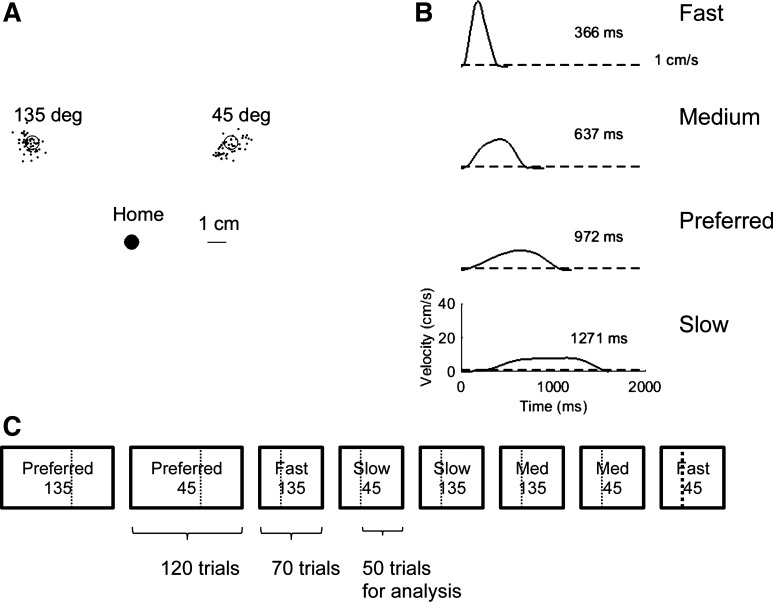Fig. 1.
Methods overview. A: subjects performed horizontal reaching movements without online visual feedback to 45° and 135° targets in 4 duration conditions: preferred, fast, medium, and slow. The black dots around the targets show end points for 1 subject in the preferred condition. For each condition and each target, we measured end-point variability from the variance of the end-point distribution. B: example of velocity profiles in the 4 conditions: preferred, fast, medium, and slow. The movement duration was determined via a tangential velocity threshold of 1 cm/s. C: timeline of the experiment: example of the schedule for 1 subject. The 2 preferred movement blocks were always given first to avoid biasing the preferred duration by other conditions (the order of the 2 blocks were counterbalanced across subjects). The other 6 blocks (3 conditions, 2 targets) were then given, with the order counterbalanced for targets and conditions. Only the last 50 trials of each block (shown by dotted line) were analyzed, to remove possible initial drift and carryover in movement duration at the beginning of the blocks.

